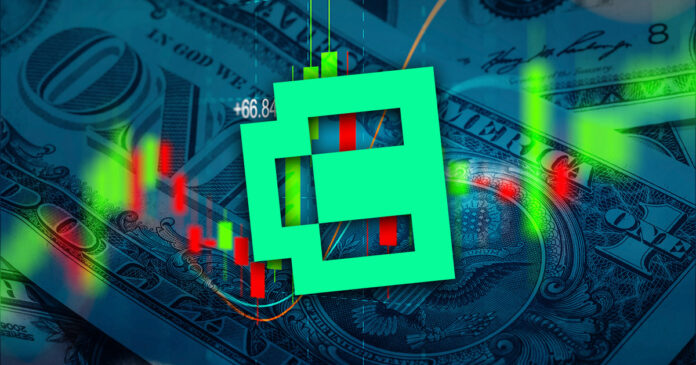Some online are speculating that the rise in Canto price could be attributed to a spike in the volume of Note — the quasi-stablecoin issued by Canto and pegged to USDT/USDC.
Recently, some Twitter users have started to speculate that the Layer-1 decentralized token could eventually face downward pressure due to its connection to Note, cautioning investors that a collateralized peg may be different only semantically to the TerraUSD/UST algorithmic stablecoin, which collapsed in 2022 after its peg fell short resulting in a run on nearly $45 billion worth of assets.
However, members in the Canto discord community were quick to downgrade all the FUD:
“UST was not collateralized by anything; they have 10% collateralized. Here we have 100% in stablecoins. We can’t mint Note with Canto.”
What is Canto?
Canto is a permissionless Layer-1 (L1) blockchain running on the Ethereum Virtual Machine, which provides Tendermint consensus secured by validator nodes with EVM executions via Cosmos SDK.
Canto’s business model is centered on what is known as Free Public Infrastructure, which it likens to free parking on a city street, with the Canto DEX being a zero-fee DEX for liquidity providers.
The business model also includes a Canto lending market (CLM), which provides users funds pooled through its lending compound v2 fork. Note completes the decentralized trifecta of offerings by Canto, described as a “full collateralized unit of account token issued by the CLM which also serves the ecosystem as a USDC/USDT soft-pegged stablecoin.”
Canto’s decentralized utility exists on the Cosmos chain, which uses a cross-chain protocol called Inter-Blockchain Communication (IBC) to help blockchains achieve interoperability.
As of Jan. 26, Canto has $42 million in USDC and USDT listed on its CLM lending unit, collateral that in turn, allows users to borrow Notes.

In theory, if the Note peg were to fall under $1, the solution would be to print more Notes, causing inflationary pressure on the existing Note supply.
However, since Note is based on an interest rate system, the tokens cannot be created, only borrowed. The rate at which to borrow these is automatically adjusted every 6 hours based on a time-weighted average price (TWAP).
With Canto price making significant gains in the last 30 days — driven largely on the back of news that it had secured investment from venture capital firm Variant — the coin has surged from a low of $0.075 at the beginning of January to $0.35 as of Jan. 26.
Credit: Source link











![Chainlink [LINK] Price Prediction: October End 2023](https://news.coinspectra.com/wp-content/uploads/2023/10/36916c121ba1402fbc496bf825c3052b-100x70.jpg)










 Bitcoin
Bitcoin  Ethereum
Ethereum  XRP
XRP  Tether
Tether  Solana
Solana  USDC
USDC  Dogecoin
Dogecoin  Cardano
Cardano  Lido Staked Ether
Lido Staked Ether  TRON
TRON  Chainlink
Chainlink  Avalanche
Avalanche  Wrapped Bitcoin
Wrapped Bitcoin  Wrapped stETH
Wrapped stETH  Stellar
Stellar  Toncoin
Toncoin  Hedera
Hedera  Sui
Sui  Shiba Inu
Shiba Inu  WETH
WETH  Litecoin
Litecoin  Polkadot
Polkadot  LEO Token
LEO Token  Hyperliquid
Hyperliquid  Bitcoin Cash
Bitcoin Cash  Bitget Token
Bitget Token  Uniswap
Uniswap  USDS
USDS  Wrapped eETH
Wrapped eETH  Ethena USDe
Ethena USDe  Official Trump
Official Trump  Pepe
Pepe  NEAR Protocol
NEAR Protocol  Ondo
Ondo  MANTRA
MANTRA  Aave
Aave  Monero
Monero  Aptos
Aptos  Internet Computer
Internet Computer  WhiteBIT Coin
WhiteBIT Coin  Ethereum Classic
Ethereum Classic  Bittensor
Bittensor  Mantle
Mantle  Cronos
Cronos  Dai
Dai  POL (ex-MATIC)
POL (ex-MATIC)  OKB
OKB 
